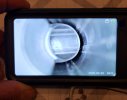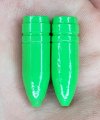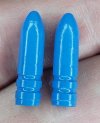Okay.... so I am back to working on this project after a bit of a break because of life getting in the way. So here we are:
Bullets are aged. Powder is thrown. Starting to seat the bullets.
So let's talk COAL.
Last night, I used a 4 bullet sample of each of the profiles and color combination that I am going to be shooting. I started using my DIY 'modified case' that is installed in the Hornady (Stoney Point) OAL gauge and measured where these coated bullets hit the lands for my rifle. Pretty interesting results. I was expecting a little bit more of consistent readings from bullet to bullet.
Each bullet/color combo was measured with 4 bullets and each bullet was measured 8 times. With that data the bullets were sometimes 0.020" different from each other. I should mention that these 4 bullets were all the same base to ogive measurement before coating. I can post data if you want, but I didn't see a clear trend.
So. as we know, testing is always the way to determine the best COAL. However my question is What COAL should I start with? Meaning, what measurement of the ogive off the lands should I start with? 0.020" of the average? of the lowest? For this first test, I need a single COAL to work with. I'm looking for the best bullet fit-a-ment here, and I'm at a loss as to where to begin.
Right now, I'm using my AR as a bolt action. Manually feeding the round into the chamber with my fingers and operating the bolt manually. Gas system is turned off, no cycling. So where to being with COAL?



